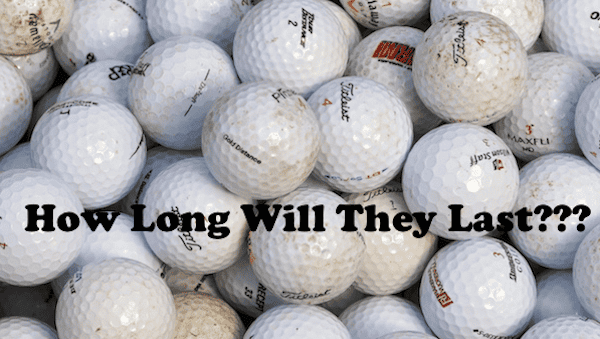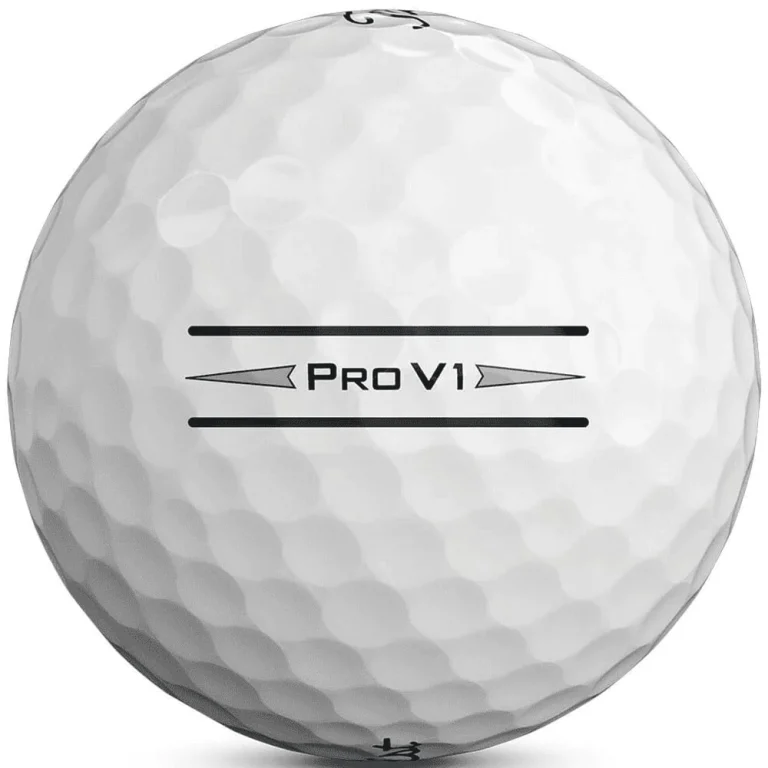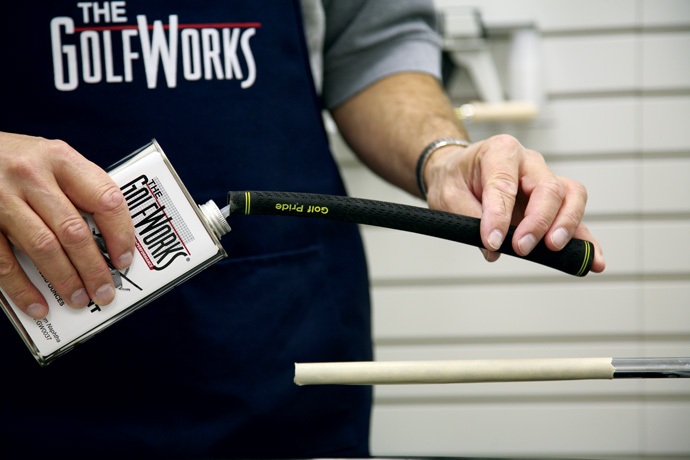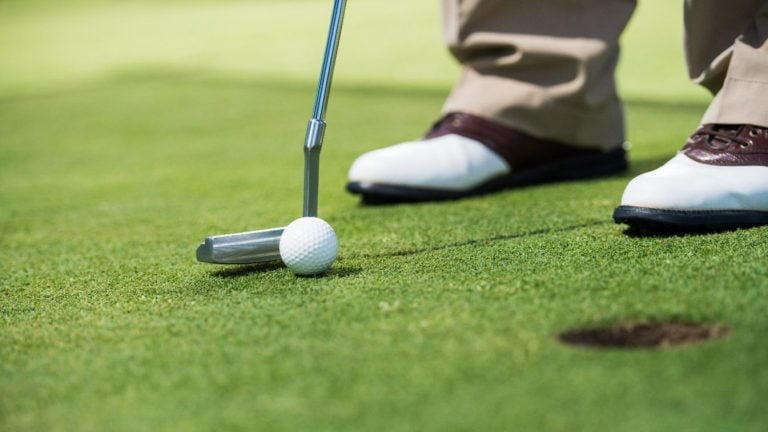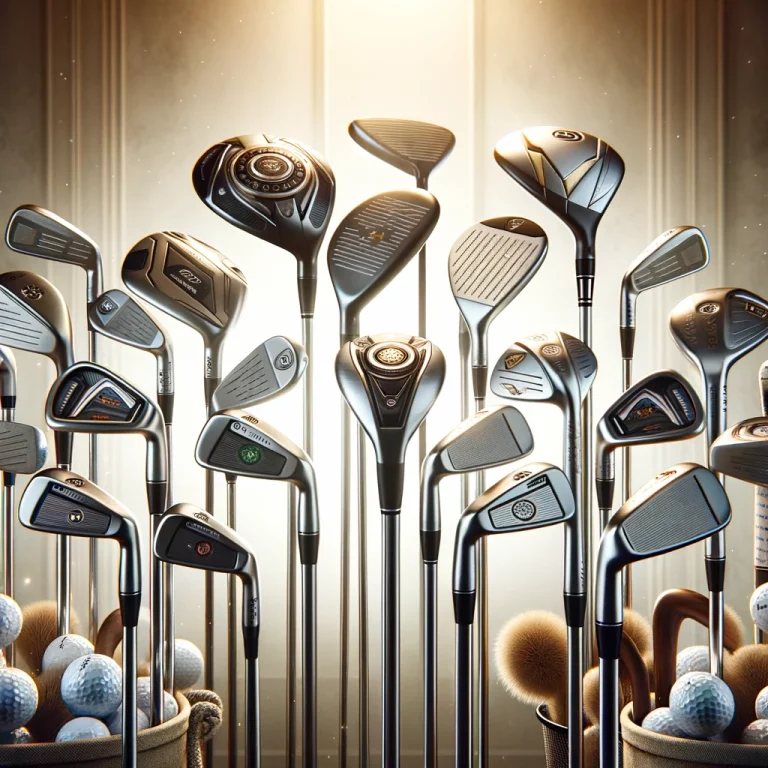Unveiling the Lifespan of Golf Balls: How Long Do Golf Balls Last?
Key Takeaways:
- The materials used in golf balls, such as urethane, ionomer, and Surlyn, greatly affect their lifespan.
- Storage conditions, including temperature, humidity, and sunlight exposure, can also impact the longevity of golf balls.
- Damage and wear, such as scuffs, scratches, water damage, and deformation, can shorten the lifespan of golf balls.
Introduction
Golf balls have a limited lifespan. Wear and tear caused by impact with clubs and external elements leads to degradation of the materials used in construction. This affects the ball’s performance. So, it is essential to understand how long golf balls last.
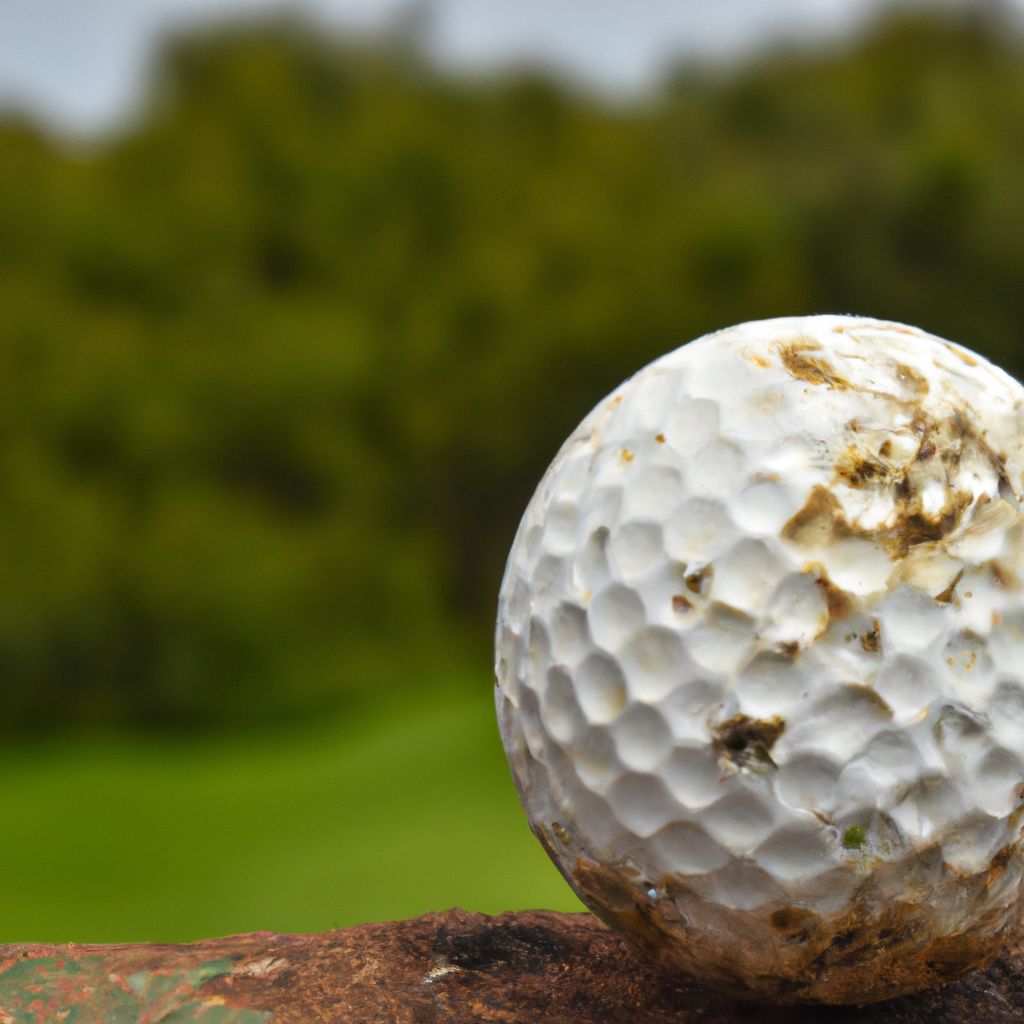
Durability depends on various factors. Players with higher swing speed can cause more stress on the ball. Poorly constructed balls or rough terrains can also accelerate wear.
Golf balls may last for a while under ideal conditions. But, it is best to replace them after a certain number of rounds or when signs of damage appear. These signs are scuffs, cuts or changes to the cover and core. Replacing worn-out golf balls ensures consistent performance.
To prolong the lifespan of golf balls, store them in cool and dry places. Check for damage before each round and replace any compromised balls. Also, use golf ball retrievers in water hazards to prevent unnecessary wear.
Understanding the lifespan of golf balls is important. Consider factors like swing speed, ball quality and signs of damage. Proper storage practices and ball retrievers can extend their lifespan and ensure reliable performance during gameplay.
Factors Affecting the Lifespan of Golf Balls
Factors Affecting the Lifespan of Golf Balls: Explore the impact of materials, storage conditions, and damage on the durability of golf balls. Discover how the quality of components and how they are stored can significantly affect the longevity of these essential sports accessories. Uncover fascinating insights into the wear and tear that golf balls endure during play, shedding light on the importance of proper care and maintenance for maximizing their lifespan.
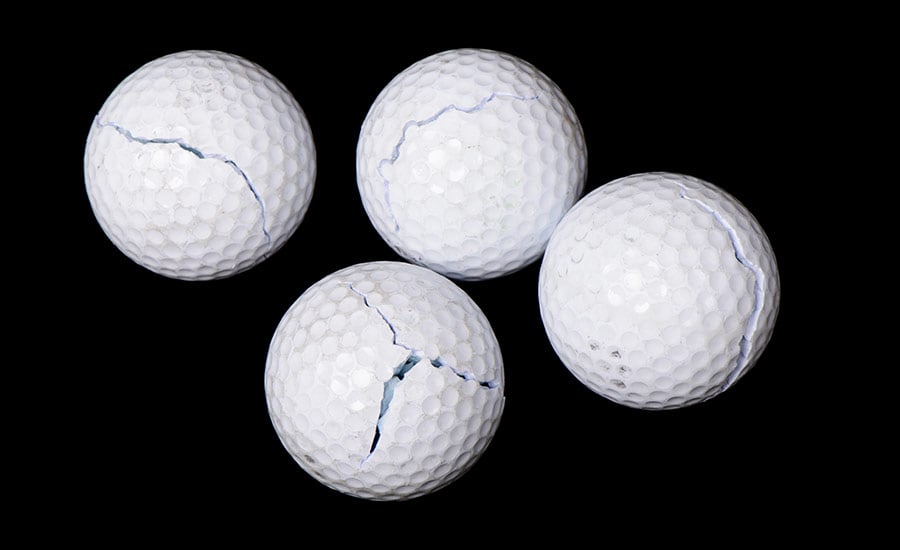
Materials used in Golf Balls
Golf balls come in various materials. Urethane, ionomer and Surlyn are among them. Urethane is like a superhero! It’s durable and long-lasting, just like an awkward family heirloom. You can’t get rid of it.
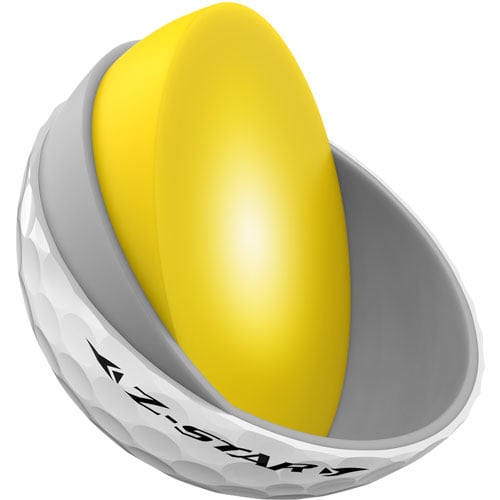
Urethane
Urethane golf balls have special properties. Here’s a look!
- Durability – Long lifespan and can take hits.
- Spin Control – High friction with clubface.
- Feel – Soft on impact.
- Distance – Has good length.
- Price – More expensive than other materials.
Also, urethane is more prone to damage. So, proper care is important. Lastly, Ionomer is great for long lasting golf balls.
Ionomer
| Factors Affecting Lifespan | Materials Used in Golf Balls |
|---|---|
| Urethane | Ionomer |
| Scuffs and Scratches | Surlyn |
| Water Damage | |
| Deformation |
Ionomer is favored. It’s strong and resistant to harm. It delivers distance and control on the golf course. Compared to urethane and Surlyn, it’s a dependable material for making golf balls.
A golfer that used an ionomer golf ball saw a great boost in their game. It was durable, so they didn’t have to replace it often. This gave them more confidence on the course. As a result, their scores improved.
Surlyn
Surlyn has some amazing characteristics. See below:
| Characteristic | Description |
|---|---|
| Durability | It can withstand scuffs, scratches, and deformation. |
| Compression | Low compression rating leads to increased distance off the tee. |
| Feel | Firm feel upon impact gives good feedback. |
| Spin Control | Moderate spin control for control and accuracy. |
Surlyn is also resistant to water damage. Unlike other materials, it won’t absorb it.
Keep in mind that each golf ball manufacturer may have their own Surlyn, so performance may vary.
Golf Digest did a study and found that Surlyn-made golf balls last 5-7 rounds. This shows that while it’s durable, it still wears down over time.
Storage Conditions
Storage conditions are essential for golf ball lifespan. The environment in which golf balls are stored affects their performance and durability. Temperature, humidity, and sunlight can damage the materials used in golf balls.
Let’s explore each factor one by one:
- Temperature variations can make golf balls expand or contract, changing their shape and reducing performance. Extreme heat or cold can speed the process up, leading to faster degradation.
- High humidity levels can make golf balls waterlogged, influencing weight and balance, and diminishing resilience and responsiveness when hit.
- Sunlight exposure should be taken into consideration. UV rays can weaken the ball’s outer layers, making it more vulnerable to scuffs and scratches. Plus, it can cause discoloration or fading.
Golfers should take these factors into account when storing golf balls. A consistent temperature-controlled environment with moderate humidity levels is ideal.
Invest in airtight containers or bags to protect from temperature fluctuations and excess moisture. Also, guard against potential sun damage. Keep your golf balls cool for optimum storage – just like relationships, extreme temperatures can lead to a breakdown.
Temperature
The impact of Temperature on Golf Balls:
| Temperature Range | Effects |
|---|---|
| High Temperatures (Above 100°F) | Deformation and softening of cover material. Reduced distance and control. |
| Low Temperatures (Below 40°F) | Cover material harder and less elastic. Decreased spin and control. |
Fluctuations in temperature can affect golf ball performance. Hot to cold or cold to hot changes can cause expansion or contraction of the materials. This results in changes in distance, spin and flight characteristics.
For optimal performance, store golf balls in suitable conditions. Avoid exposing them to extreme temperatures. Store indoors or in climate-controlled environments. Allow golf balls to acclimate to current temperature before use.
When transporting golf balls, use insulated storage bags or coolers. This helps protect them from excessive heat or cold.
By properly managing temperature, golfers can ensure their golf balls last longer and perform better.
Humidity
Golf balls can become waterlogged when exposed to high humidity. This can cause a loss of distance and control. The outer cover of the ball also degrades, resulting in scuffs and scratches that affect performance.
To minimize the effects of humidity, golf balls should be stored in cool and dry environments. Airtight containers or bags with desiccants are recommended. This helps maintain the ball’s construction and increases its lifespan. Check stored golf balls often for water damage or deformation.
Sunlight
Sunlight can discolor and fade the outside of a golf ball. This affects both its look and aerodynamic properties. Dimples on the surface of a golf ball help it fly. Sunlight can damage dimples, causing reduced distance and accuracy. Prolonged exposure to sunlight can make the outer covering of a golf ball brittle and susceptible to cracking. This can lead to scuffs and scratches, further compromising its performance.
Store golf balls in a cool, dark place to keep them from sunlight. Different materials used in golf balls have different levels of susceptibility to sun damage. Urethane-covered balls are usually more UV-resistant than those with ionomer or Surlyn covers. To keep golf balls in optimal condition, protect them from sunlight.
Store them indoors or in a shaded area when not in use. Inspect them for signs of sun-induced damage regularly. Proper care and precautionary measures can help extend the lifespan and maintain the performance of your golf balls.
Damage and Wear
Damage and wear on golf balls are common. They come from things like scuffs, scratches, water damage, and deformation. These affect performance and lifespan.
| Type of Damage and Wear | Description |
|---|---|
| Scuffs and Scratches | Happens when golf ball hits hard or rough surfaces. Can change aerodynamics, resulting in less distance and control. |
| Water Damage | Extended time in water makes ball absorb moisture. Changes weight, balance, and flight. Result: less distance and accuracy. |
| Deformation | Too much force or pressure leads to marks or dents. Alters shape. Decreases distance and control. |
There may be other unique damage and wear, based on golf ball material or storage. Each type affects longevity and performance.
It’s important for players to understand the impact of damage and wear. They should inspect balls for signs of damage. This keeps them performing longer on the course.
Scuffs and scratches may look cool, but they remind us of a lost game and a frustrated golfer.
Scuffs and Scratches
Scuffs and scratches can reduce golf ball performance. When the ball contacts hard surfaces like trees, rocks, or cart paths, they can occur. In rough areas like sand and gravel, they can also happen. This disrupts airflow, causing less distance and accuracy when hit. It also changes spin, preventing control over trajectory.
But scuffs can be beneficial too! Some golfers create scuff marks to alter spin. Too much damage, however, can reduce durability and performance.
Pro Tip: Inspect your balls for scuffs and scratches after each game. If you see big damage or poorer performance, it’s time to get new balls! Golf balls and water don’t mix well, just like a wet golf course and my hopes for a good game.
Water Damage
Water damage can do a lot of harm to golf balls. It can reduce their distance and control. Urethane, ionomer and Surlyn are materials used in golf balls, which can be prone to absorbing water, causing them to deform and lose their properties.
Golfers must take care to protect their balls from water. For instance, avoid playing in hazardous water or storing them in damp areas. After playing in wet conditions, it’s important to dry them off.
Water damage can also cause scuffs and scratches on the surface, impacting the flight and control. Regularly inspect your golf balls for signs of water damage and replace them if needed.
Take measures to prevent water damage. This will help maintain the quality and performance of your golf balls. Store them in the right environment with temperature and humidity control. This will keep them in good condition for longer.
Deformation
Deformation isn’t just bad for a golf ball’s looks. It affects performance, too. When deformed, a ball may lose its initial distance, flight trajectory, and control. This changes how it interacts with the clubface, leading to inaccurate shots. Golfers must check for deformation and replace balls if needed.
Pro Tip: To protect your golf balls from deformation, don’t use damaged or worn-out balls. Regularly inspect for deformation and replace them for consistent performance.
How Long Golf Balls Can Last
When it comes to the lifespan of golf balls, it’s important to consider different factors. In this section, we’ll delve into the durability and longevity of golf balls, specifically focusing on two-piece golf balls, three-piece golf balls, and the shelf life of unused golf balls. By understanding how different types of golf balls fare over time, you can make informed choices for your game and optimize your performance on the greens.
Two-Piece Golf Balls
Two-piece golf balls have a large, solid rubber core surrounded by a hardy cover. The core amplifies energy on impact, resulting in greater distance. The cover is usually made of either ionomer or urethane for durability and control.
Low spin rates reduce hooks and slices, making two-piece golf balls suitable for beginners or high-handicap golfers. Plus, if stored properly, these balls can last an extended period.
However, two-piece golf balls may not provide the same precision as multi-layered golf balls. Still, for recreational players looking for distance, two-piece golf balls are a great choice. Why settle for two-piece when you can have the complexity and drama of a three-piece?
Three-Piece Golf Balls
The first layer of three-piece golf balls is the core. It is typically made of hard rubber or synthetic material. This core provides a solid foundation for performance.
The mantle is the second layer. It is vital for enhancing distance and control. The mantle adds a boost to overall performance. So, players can get far and also have precise control over their shots.
The third layer is the cover. It is made of either urethane or Surlyn. This layer gives the golf ball a feel and touch that allows spin control and improved playability around the greens.
These three-piece golf balls provide a combination of distance, spin control, and durability. They are designed for players who want maximum distance off the tee with control on the green. The multi-layer construction ensures power and accuracy.
Plus, these golf balls have a longer lifespan than other types. They are made of durable materials which resists scuffs, scratches, and deformation. With proper care, they can last multiple rounds prior to replacement.
To increase the lifespan of the golf balls, store them in a cool and dry place away from direct sunlight. This keeps them safe from damage due to temperature changes or moisture.
In conclusion, give these three-piece golf balls a chance. Enjoy their remarkable performance and longevity. Don’t let them be the loneliest golf balls on the fairway!
Unused Golf Balls
Unused golf balls can last a long time if kept in the right place and taken care of. Factors like storage and wear can influence their life span. To keep them in top condition, here are a few things to remember:
- Storage: Golf balls should be kept away from direct sunlight in a cool, dry spot. Too much heat or humidity can damage the materials in the ball, causing it to last less.
- Materials: Different materials like urethane, ionomer and Surlyn are used in golf balls. The length of time they last depends on the material.
- Cleaning: Regular cleaning helps maintain performance and lifespan. Dirt and debris can affect flight and control.
- Check for Damage: Check unused golf balls for signs of wear, like scuffs, scratches, water damage and deformation. This can affect performance and life span.
Though taking care of golf balls can extend their life, eventually they’ll start losing performance. Poor storage can drastically reduce their life. So make sure to keep them in good shape for maximum distance, spin, and control.
The Impact of Golf Ball Condition on Performance
The condition of golf balls can significantly impact their performance, affecting distance, spin, flight, and control. Understanding how the condition of golf balls influences these factors is key to improving your game.
Distance
Golf balls and distance have a close relationship. Two-piece and three-piece golf balls are the most commonly used types.
A two-piece ball has a solid core with a durable cover like Surlyn or urethane. This type of ball provides maximum distance.
Three-piece balls usually have a solid or liquid-filled core and extra layers beneath the cover. They give more control and spin, but it comes at the cost of some distance.
Scuffs and scratches on a golf ball can also affect its performance. Alterations in aerodynamics result in less distance when hit. To make sure you get the best from your golf ball, keep it in good condition. Regularly inspect it for damage and clean off dirt and debris that could alter its aerodynamics.
Pro Tip: Use two-piece balls that have a solid core and durable covers. Inspect and clean your ball regularly to get maximum distance on the course.
Spin
The spin of a golf ball is the rotation it experiences in flight. It can have a major effect on trajectory and performance. Golf balls with higher spin rates provide more accuracy and control. They let players shape shots and hit precise targets. Lower-spin golf balls, on the other hand, are better for maximum distance off the tee. They cut down on side spin and keep the ball straight.
Materials like urethane or ionomer used to create golf balls can affect spin characteristics. Urethane covers result in higher spin rates and increased greenside control. Ionomer covers, meanwhile, give lower spin rates and more distance.
The condition and wear of a golf ball can also influence spin. Scuffs and scratches can disrupt airflow, leading to less spin.
Golfers with faster swing speeds should use higher spinning balls for backspin and optimal stopping power. For players with slower swing speeds, low-spin balls are easier to control and provide better distance.
Pro tip: To maximize spin control, you should regularly clean and inspect your golf balls. Get rid of dirt and debris from the surface. This will help maintain optimal aerodynamics and consistent performance. Want better flight and control? Make sure your golf ball lasts longer than your relationship with the fairway!
Flight and Control
Golf balls’ flight and control are determined by various factors. Urethane, ionomer, and Surlyn are the materials of choice for golfers. Storage conditions like temperature, humidity, and sunlight exposure can alter flight and control. Scuffs, scratches, water damage, and deformation can also affect performance.
Each type of ball (two-piece or three-piece) has its own flight and control characteristics. Swing speed and player preference determine what ball suits them best. Unused balls need to be inspected for any manufacturing defects that could hamper their performance. Cleaning techniques also assist with optimal flight performance.
Research into aerodynamic designs for enhanced stability has been conducted to improve the flight and control of golf balls. These advancements have changed how well golf balls can be controlled and their flight trajectories.
Proper Golf Ball Maintenance and Care
Proper Golf Ball Maintenance and Care: Discover essential tips for maintaining golf balls, from cleaning techniques to inspecting for damage and even options for repurposing or disposal. Maximize the lifespan and performance of your golf balls with these simple yet effective strategies.
Cleaning
Golf ball cleaning is a must! It keeps the balls performing and lasting longer. Cleaning not only removes dirt and grime but also ensures optimal performance when it comes to aerodynamics and spin. This leads to greater control and distance.
Here’s how to clean golf balls:
- Fill a bucket with warm water and mild liquid soap. Submerge the golf balls in the soapy water, let them soak for a few minutes.
- Use a soft-bristled brush or sponge to scrub each golf ball. Focus on scuffs and stains. This will help remove stubborn dirt without damaging the cover.
- Rinse the balls with clean water, then dry them with a towel or let them air dry.
Cleaning helps preserve the balls and avoid a buildup of debris. This buildup can affect distance and accuracy. Regular cleaning is key to maintaining good contact between the clubface and ball. This helps achieve consistent shots and flight patterns. Don’t miss out on your best game – clean your golf balls!
Inspecting for Damage: Squeeze the balls. If they squeak, it’s time to retire them.
Inspecting for Damage
Golf balls can suffer damage. Inspecting for this is important. To do this, three steps are key:
- Check for scuffs and scratches. Look on the surface for visible marks. These can come from hard surfaces, changing the ball’s aerodynamics and accuracy.
- Assess water damage. Signs like discoloration or moisture can alter its weight distribution.
- Evaluate deformation. Place it on a flat surface and look for indentations or uneven shape. This can change how it rolls on greens and affect accuracy.
Inspect the ball before each round or practice session. This can ensure maximum performance and durability.
Repurposing or Disposal Options
Golf balls can be exposed to factors that reduce their lifespan. Consequently, it is essential to consider options for reusing or disposing of them. Repurposing and disposal are two solutions for this.
- Repurposing Options:
- Golf balls can be used as practice balls.
- They can be used in backyard games.
- Creative ways to use them as decorations exist.
- Donating them to local schools is an option.
- Disposal Options:
- For disposal, recycling is the best option.
- Recycling centers may accept golf balls.
- Golf balls can be disposed of in regular waste bins.
- Municipalities may have designated drop-off sites for sports equipment.
- Unique Detail:
Manufacturers and retailers may have programs for returning golf balls for recycling or proper disposal. This helps reduce environmental impact and promote sustainability. By taking advantage of these programs, golfers can make sure their old balls are handled responsibly.
Conclusion
Golf balls have a restricted lifespan. Wear and tear from usage, as well as extreme weather conditions, can reduce their performance. Reference data states they last around five to seven rounds of 18 holes before deterioration occurs. Golfers may lose some of them, which reduces the lifespan. Factors, such as swing speed, golf course conditions, and ball quality, affect the actual lifespan.
Moreover, high heat or cold temperatures can make the outer cover of the ball brittle or soft. Thus, it’s recommended to store golf balls in a cool and dry place, away from direct sunlight.
In addition, dirt, grass, and scuff marks can alter the aerodynamics of the ball. This results in reduced distance and accuracy. To maintain performance, golf balls should be cleaned regularly.
To ensure golf balls’ performance and lifespan, golfers should replace them periodically or when changes in performance are noticed. This helps to keep ball flight and distance consistent, improving the overall game.
Some Facts About How Long Do Golf Balls Last:
- ✅ Golf balls can last for years if stored in normal conditions (70 to 80 degrees Fahrenheit). (Source: Team Research)
- ✅ A two-piece golf ball can last for a decade or more without significant changes in performance. (Source: Team Research)
- ✅ Titleist golf balls can be safely stored for five years or more if kept away from excessive heat. (Source: Team Research)
- ✅ Even though golf balls can last for years, older balls may not have the same technological improvements as newer ones. (Source: Team Research)
- ✅ Most golf balls can last for several hundred rounds of golf or up to 10 years if properly maintained. (Source: NationalClubGolfer.com)
FAQs about How Long Do Golf Balls Last
How long do golf balls last when stored in normal conditions?
Golf balls can last for years if stored in normal conditions, such as temperatures between 70 to 80 degrees Fahrenheit.
What is the average lifespan of a golf ball?
When stored properly, the average lifespan of a golf ball is about 10 years.
Can golf balls go bad if they are scuffed or damaged?
Yes, golf balls can go bad if they are damaged from external sources such as chips, scratches, cuts, or scuffs. Scuffs on golf balls can decrease their value and limit their performance in terms of distance, spin, flight, and roll. Cleaning scuffs off golf balls can help prolong their life.
How does storing golf balls in extreme temperatures affect their lifespan?
Golf balls stored in extreme temperatures, whether it’s extreme cold or heat, can deform or lose their performance. Covers made from ionomer can melt and deform in temperatures above about 170 degrees Fahrenheit.
What are the recommended storage conditions for golf balls to maximize their lifespan?
Golf balls should be stored in a dry place at room temperature, ideally between 70 and 80 degrees Fahrenheit, to maintain their performance and prolong their lifespan.
What should be done if a golf ball gets waterlogged?
If a golf ball sits in water for a long period of time and becomes waterlogged, it can lose driving distance. It is best to avoid playing with golf balls that appear deformed, lighter, heavier, or uncleanable when retrieved from ponds or other bodies of water.
